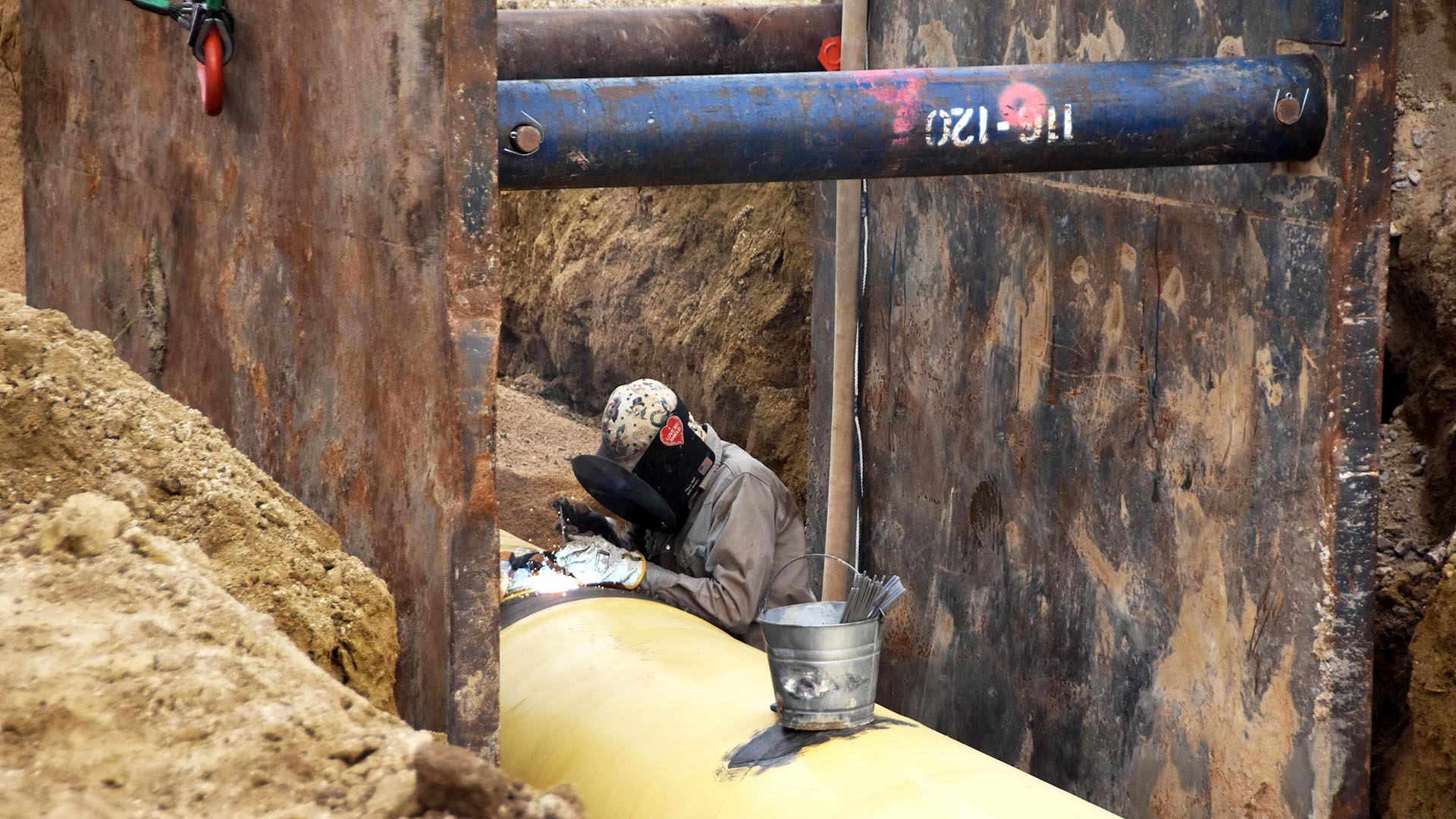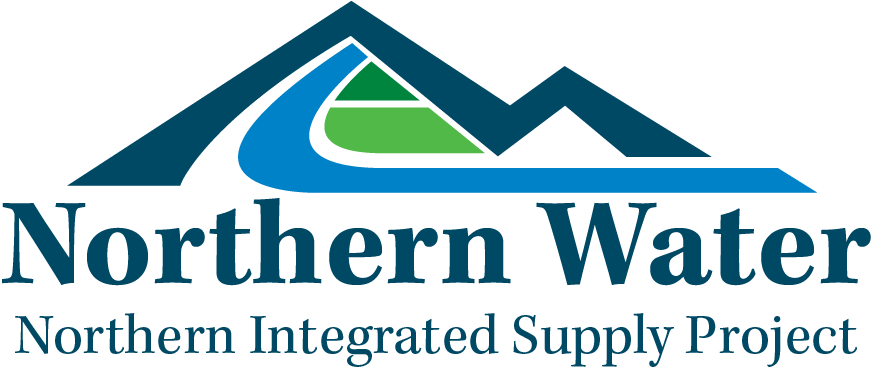Pipeline
Delivering Water Through 80 Miles of Safe, Buried Pipelines
A vital component of NISP is the installation of approximately 80 miles of underground pipelines. These modern, resilient pipelines will support cooperative water exchanges and ensure reliable delivery to Northern Colorado communities that need it most.
Though often unnoticed, pipelines are a safe and widely used method of transporting essential resources. Beneath public and private lands across Northern Colorado, a vast network of buried infrastructure quietly moves water, electricity, and energy every day.
Northern Water currently oversees 175 miles of pipelines that safely convey water from the West Slope to reservoirs, farms, and cities. The new NISP pipelines—up to 84 inches in diameter—will be engineered to meet modern safety standards and buried with approximately five feet of earth cover, ensuring both protection and minimal surface disruption.
These pipelines will help secure a sustainable water future for Northern Colorado, supporting growth while preserving the region’s natural resources.

FAQs
How big is the pipeline, and how deep will it be buried?
The pipelines will be between 32 to 84 inches in diameter, but exact sizing and will depend on location, hydraulic conditions, and requirements of the NISP participants receiving the water. Typically, the pipeline will be buried 5 feet deep.
How safe will the pipeline be?
The pipeline will be very safe and built to industry standards. The pipeline will be made of engineered steel and will operate at various pressures typically between 100 to 275 pounds per square inch. The pipeline is designed to withstand any temporary pressures and surges that could occur within the pipeline. Northern Water will conduct quality control checks, test the pipeline at a pressure above the operating pressure, and will install the pipeline in a way that protects other utilities, avoid hazards, and safeguards private and public property. In addition to being made from high-strength steel, the pipeline will be protected from corrosion. Once water is flowing through the pipeline it will be continuously monitored. In the unlikely event that the pipeline develops a leak, the pipeline would shut down automatically.
How will roads be impacted by construction?
In some locations, the pipeline may be placed in or near the roadway or cross underneath a roadway. Roadways may also be used for construction access. A detailed construction plan will be developed for all work within and near roadways, which will be submitted to local permitting authorities. Access for property owners, emergency personnel and others will be maintained throughout construction.
How can I tell when and where the pipeline is installed?
After installation of the pipeline, the ground is fully restored to its original condition. Pipeline markers will designate the underground location of the buried pipe. The markers will typically be blue and include the phone number of who to call for information, or to report any emergency. Markers are placed at bends in the pipeline, roadway and utility crossings, and at property lines.
Partnering with Landowners
As part of NISP, approximately 80 miles of pipelines will be constructed—requiring the careful acquisition and management of easements across public and private lands.
Northern Water has a long history of working respectfully and successfully with hundreds of property owners throughout Northern Colorado. These partnerships have helped build the infrastructure that today delivers water to homes, farms, and businesses across the region.
Easement acquisition is one of the first steps in the NISP construction process. Northern Water ensures that every property owner receives just compensation and that the process complies fully with all applicable laws and regulations. Our goal is to work collaboratively with landowners to build a resilient water future for generations to come.

If your property is within the pipeline route, here’s what you can expect from us.

Field Investigations and Ownership Verification
- Prior to design and construction of the pipeline we investigate the property and verify ownership.
- We’ll review public records to determine who the legal property owners are and whether there are any mortgages or liens.
- Northern Water representatives will coordinate with you before accessing your property for land surveying and other investigatory work. This request to access will be done with a request for Right of Entry to perform field work.

Notifying Property Owners
- Once we make a final identification of the property upon which we need to acquire an easement we will mail every property owner a notice.
- A legal description of the proposed easement will accompany the notice.

Appraisal
- We compensate property owners fairly for easements, and our appraiser will contact you to see if you’d like an opportunity to accompany our appraiser as they inspect the property.
- Our appraiser's written report can be provided to you under certain conditions.
- Under certain circumstances, Northern Water pay the reasonable cost of a separate appraisal obtained by the property owner (Colorado Revised Statutes § 38-1-121).

Acquisition
- We’ll provide you with a written offer of fair market value to begin the negotiation for each easement acquisition.
- Your individual offer to acquire the easement will include a description of the project and how it will affect the property.
- If the offer is accepted, a closing will occur at a time and place that work for both you and Northern Water.

Land Use Within the Pipeline Easement After Construction
Once construction of the NISP pipeline is complete, landowners will be able to continue using the easement area—with some limitations to protect the integrity and safety of the pipeline.
Certain activities are not permitted within the easement, including:
- Building permanent structures
- Planting new trees or deep-rooted shrubs that could interfere with the pipeline
- Constructing paved roadways that may compromise pipeline infrastructure
- Installing permanent fencing that obstructs pipeline access or maintenance
In agricultural and residential areas, land within the easement can generally continue to be used for its original purpose, provided these uses do not conflict with pipeline safety or maintenance requirements.
After construction, Northern Water will restore the easement area as closely as possible to its original condition. This includes reestablishing landscaping, fencing, and access roads—so long as they do not interfere with the pipeline’s operation.
